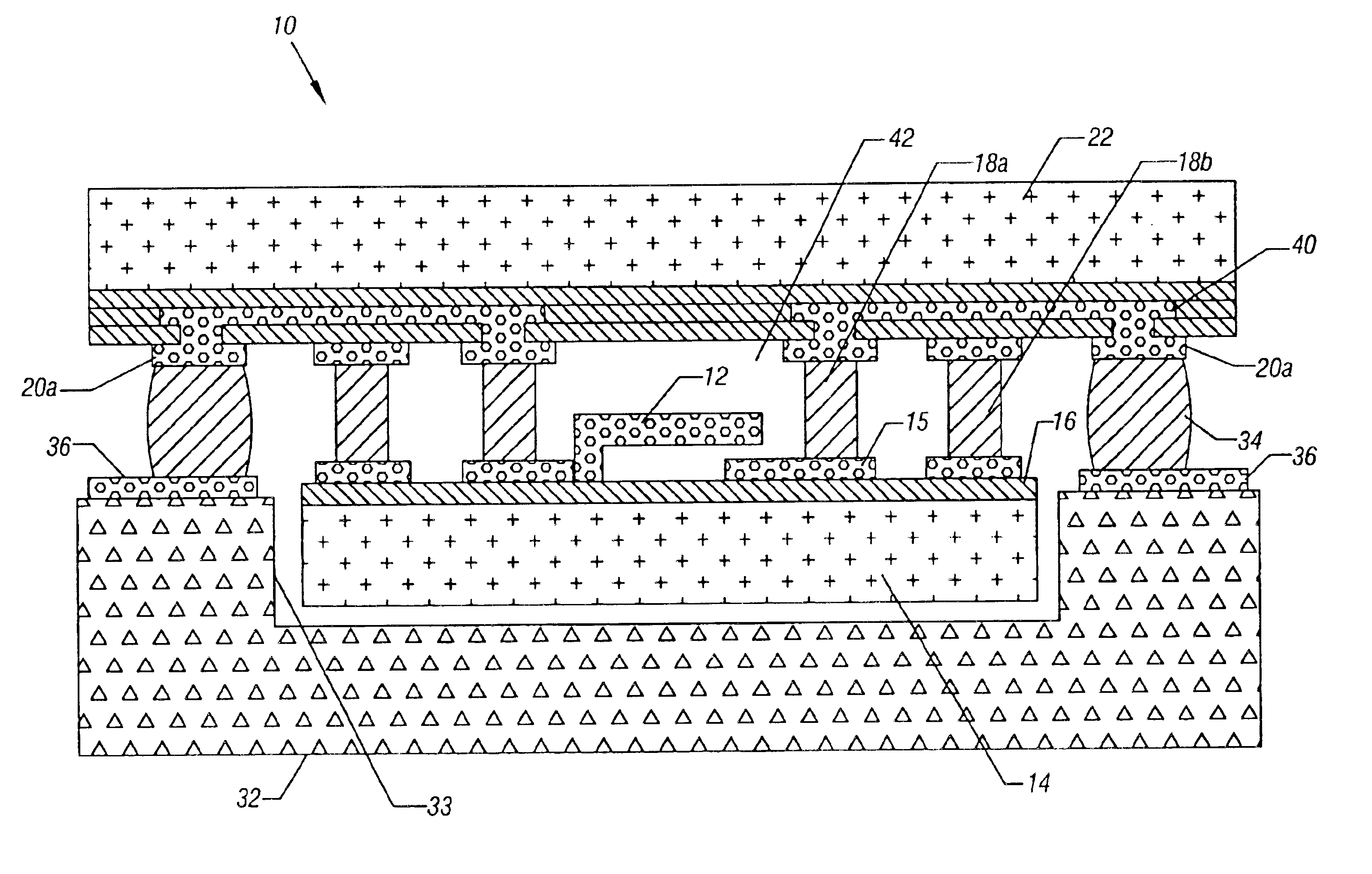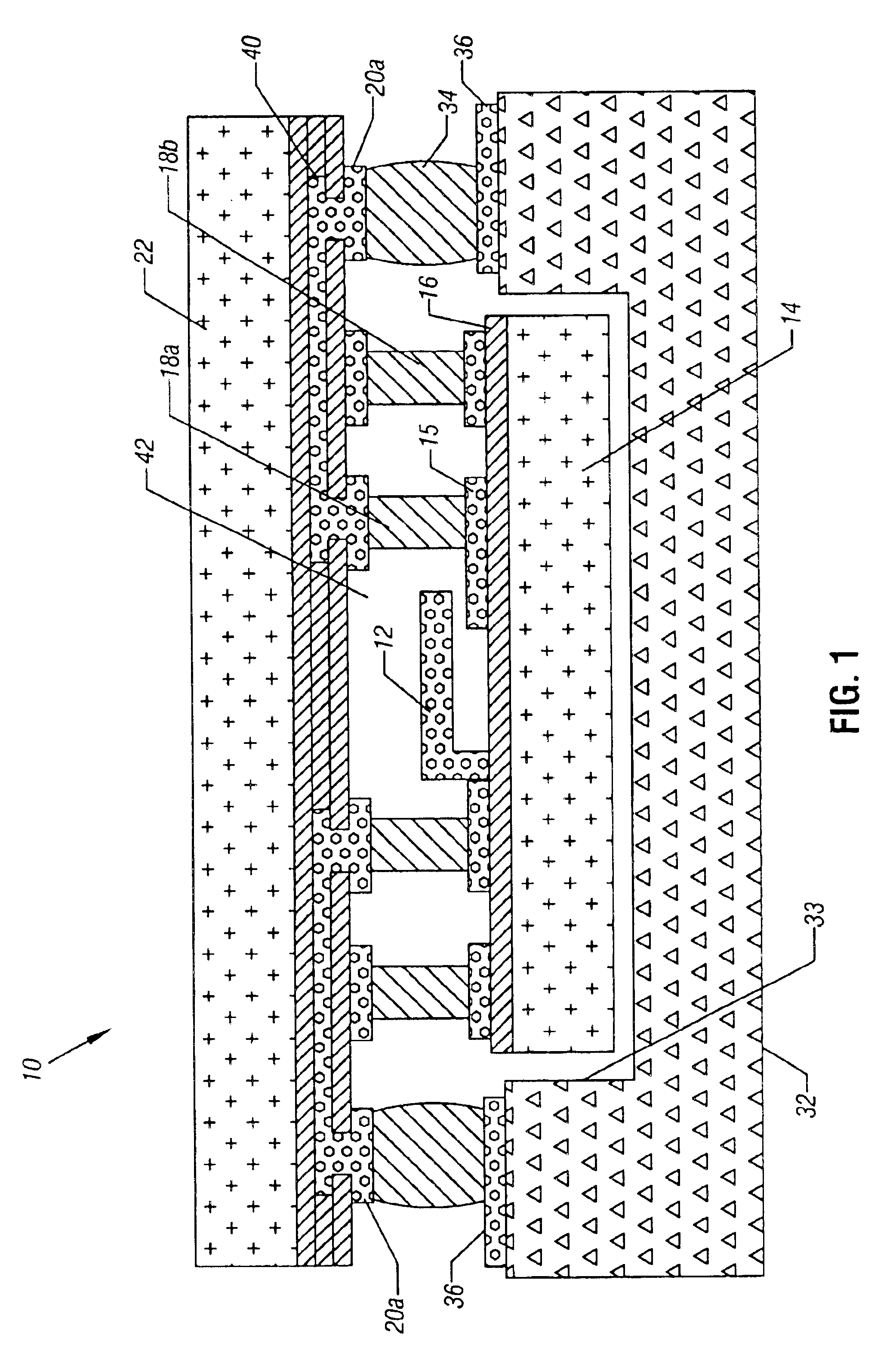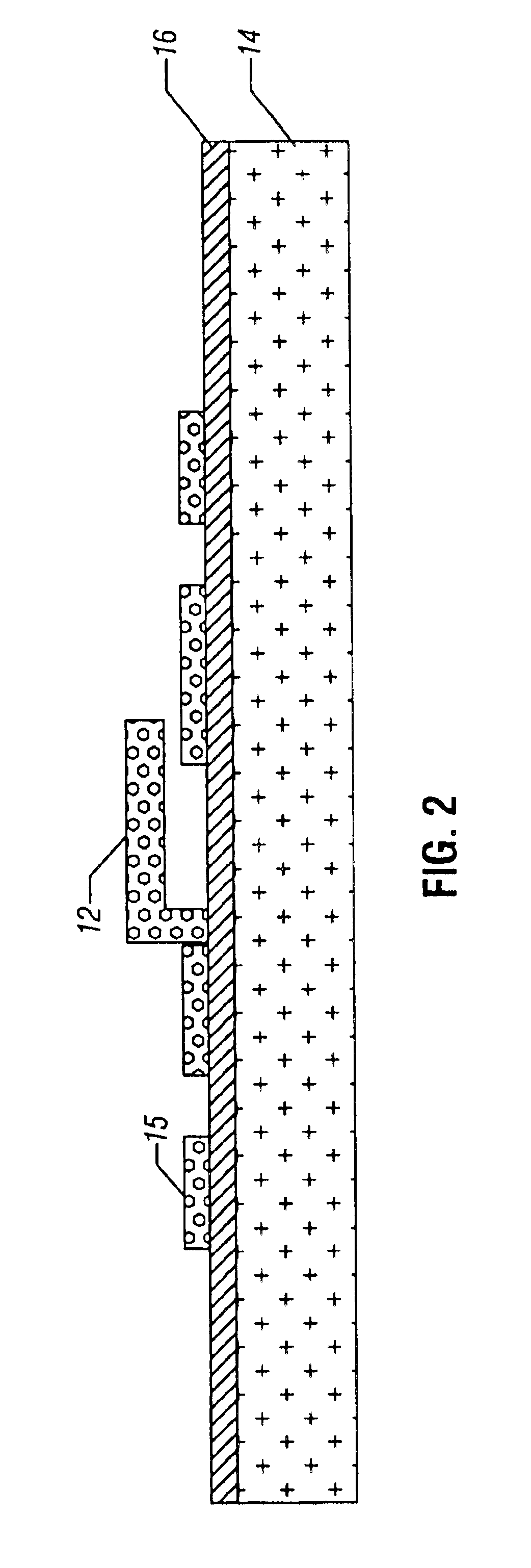Packaging microelectromechanical structures
a micro-electromechanical and packaging technology, applied in the field of packaging micro-electromechanical structures, can solve the problems of increasing the size of the resulting product, affecting the reliability of the method, and affecting the accuracy of the product,
- Summary
- Abstract
- Description
- Claims
- Application Information
AI Technical Summary
Problems solved by technology
Method used
Image
Examples
Embodiment Construction
Referring to FIG. 1, a MEMS component 12, such as a radio frequency (RF) MEMS component, including as examples a varactor, a switch or a resonator, may be formed on a semiconductor structure 14 having a layer 16. A plurality of bond pads 15 and 16 may be provided on the layer 16. The MEMS component 12 may be surrounded on one side by a printed circuit board 32 having a cavity 33 conforming to the shape of the semiconductor structure 14 in some embodiments. A gap may be maintained between the board 32 and the structure 14.
A plurality of solder bumps 34 may bond the printed circuit board 32 to a semiconductor structure 22 through bond pads 36 and 20a. The semiconductor structure 22 may have internal electrical interconnection layers 40 that interconnect bond pads 15, 20a and 36 on the structure 14, the board 32 and the semiconductor structure 22. Thus, electrical connections are possible between the various components.
A solder ring 18b completely encircles the MEMS device 12, defining...
PUM
 Login to View More
Login to View More Abstract
Description
Claims
Application Information
 Login to View More
Login to View More - R&D
- Intellectual Property
- Life Sciences
- Materials
- Tech Scout
- Unparalleled Data Quality
- Higher Quality Content
- 60% Fewer Hallucinations
Browse by: Latest US Patents, China's latest patents, Technical Efficacy Thesaurus, Application Domain, Technology Topic, Popular Technical Reports.
© 2025 PatSnap. All rights reserved.Legal|Privacy policy|Modern Slavery Act Transparency Statement|Sitemap|About US| Contact US: help@patsnap.com



